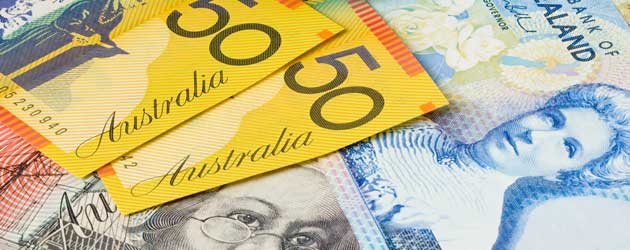 During local trade the Australian Dollar lost ground against its US counterpart as investors flocked to the latter currency in the aftermath of the Bank of Japan’s policy announcement. Meanwhile, the BOJ’s decision to increase stimulus allowed the ‘Aussie’ to leap against the Yen, with AUD/JPY achieving its highest level for over four years. The Australian Dollar hit 101.13 Yen, the strongest figure recorded since mid 2008. A slight downward correction has since seen the pairing trading in the region of 100.36 Yen.
During local trade the Australian Dollar lost ground against its US counterpart as investors flocked to the latter currency in the aftermath of the Bank of Japan’s policy announcement. Meanwhile, the BOJ’s decision to increase stimulus allowed the ‘Aussie’ to leap against the Yen, with AUD/JPY achieving its highest level for over four years. The Australian Dollar hit 101.13 Yen, the strongest figure recorded since mid 2008. A slight downward correction has since seen the pairing trading in the region of 100.36 Yen.
The Australian Dollar exchange rate was trading in the region of 1.0414 against the US Dollar as of 09:35 am GMT
As industry expert Derek Mumford comments: ‘The Yen has weakened considerably against the Aussie and the US Dollar. But the Aussie has weakened against the US, Euro and a little big against Sterling as well so there are some quite strange moves going on.’
Similarly, currency strategist John Horner asserted: ‘What we’re seeing now is very much a different transmission channel where the strengthening Dollar-Yen is leading to some upward pressure on other Dollar-Asia crosses. With Australia trading quite closely with a number of those Asian currency pairs, it’s translating into pressure on Aussie as well.’
This morning the ‘Aussie’ has experienced an additional modest decline against the US Dollar prior to the release of this afternoon’s influential non-farm payrolls data.
Yesterday’s US initial jobless claims figures revealed an unexpected increase in first time benefit applications and if today’s employment report also disappoints the ‘Aussie’ could benefit.
Horner, based at Sydney’s Deutsche Bank, noted: ‘Expectations for payrolls have come down. We would expect that weaker payrolls, should it be seen, would see Aussie climb against the US Dollar.’

Comments are closed.